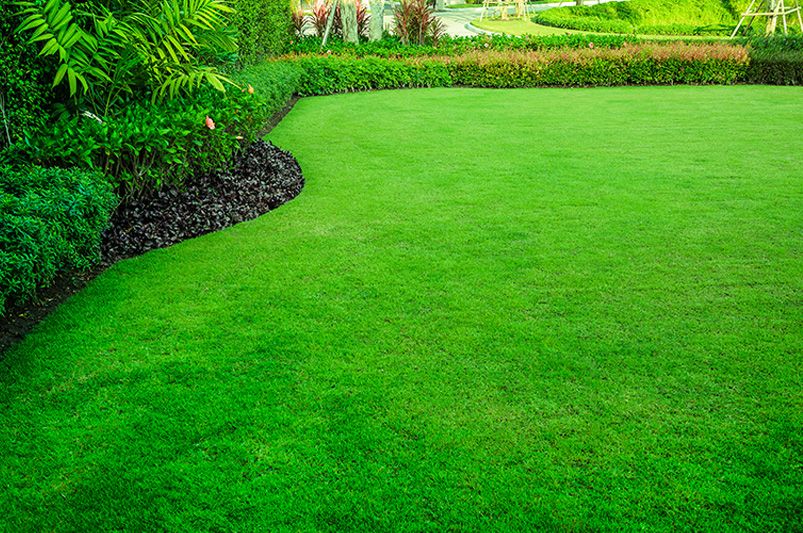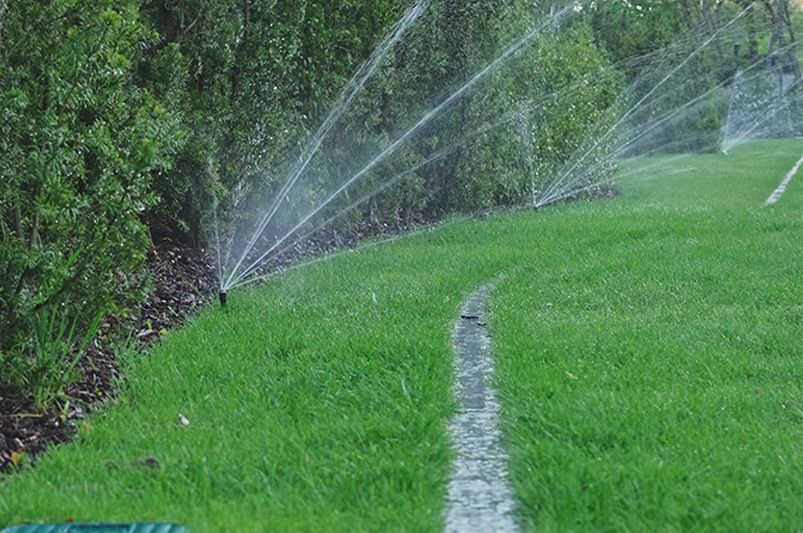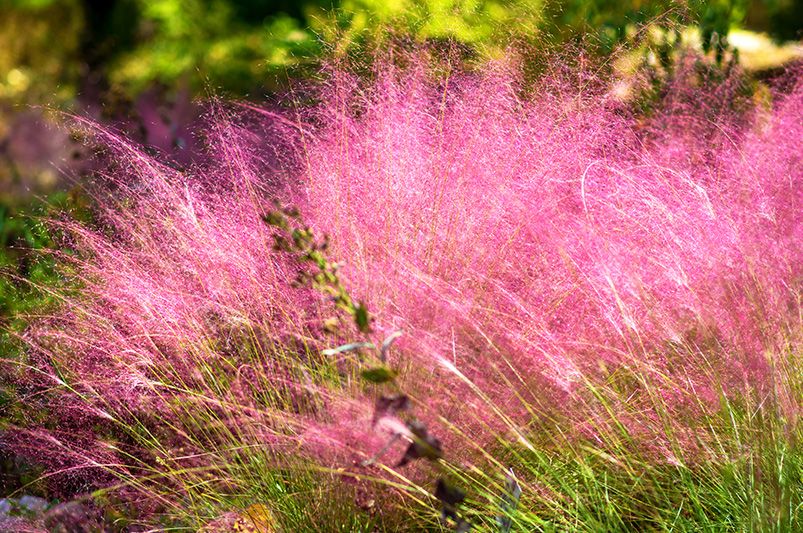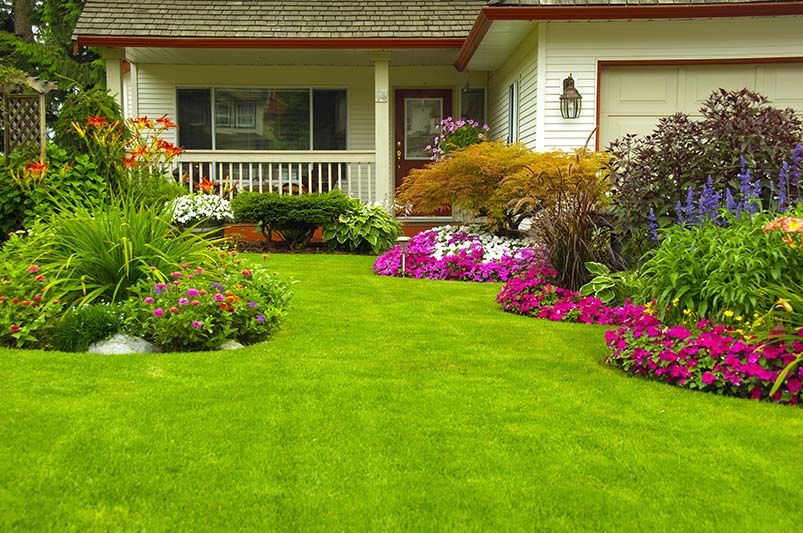
Beautiful Lawn Alternatives for a Greener Yard
Published: 19/06/2025 | Updated: 19/06/2025
Beautiful Lawn Alternatives for a Greener Yard
For generations, the lush, green grass lawn has been a symbol of the perfect yard—but more and more homeowners are starting to question whether that vision is truly sustainable. Traditional lawns can be water-hungry, high-maintenance, and surprisingly unfriendly to the environment. With rising concerns about drought, biodiversity, and the time spent mowing and fertilizing, many people are seeking smarter, greener alternatives.


That’s where low-maintenance lawn alternatives come in—offering beautiful, resilient options like clover, creeping thyme, and native grasses that reduce your environmental footprint while enhancing your outdoor space. These modern solutions don’t just look great—they save water, attract pollinators, and cut down your weekend chore list.
Curious about how you can create a lawn that’s both stunning and sustainable? Keep reading for practical tips and inspiring alternatives that go beyond the typical grass yard.
And don’t forget to explore our weekly blog article for more expert landscaping ideas, seasonal planting guides, and creative design solutions to help you transform your outdoor space with confidence!
Why Homeowners Are Moving Beyond Traditional Lawns
The classic green grass lawn might look pristine, but it comes with a high environmental and maintenance cost. As more homeowners embrace sustainable living, alternative lawns are gaining popularity—and for good reason.

1. Water Conservation and Drought Resilience
Traditional grass lawns are notoriously thirsty, often requiring excessive irrigation, especially in hot or dry climates. In contrast, lawn alternatives like clover, creeping thyme, and native grasses thrive with far less water. By switching to drought-tolerant ground covers, homeowners can significantly reduce their outdoor water use, contributing to both lower utility bills and responsible water stewardship.
2. Lower Maintenance and Reduced Mowing
Endless mowing, edging, and fertilizing can quickly turn lawn care into a full-time hobby. Alternative lawns grow at a slower rate, meaning fewer mowing sessions and less overall upkeep. Many options, like clover and creeping thyme, naturally suppress weeds and stay green without constant attention—freeing up your weekends for relaxation instead of yard work.
3. Supports Biodiversity and Pollinators
Unlike sterile grass lawns, many lawn alternatives offer critical support for local wildlife. Clover, thyme, and other ground covers produce small, nectar-rich flowers that attract bees, butterflies, and other beneficial pollinators. Native grasses and wildflowers also create vital habitats for birds and insects, helping to restore balance to suburban ecosystems.

ShrubHub Tip:
Choosing a lawn alternative isn’t just about saving time—it’s a smart investment in the health of your yard and the planet. At ShrubHub, our expert designers can help you select the perfect low-maintenance, eco-friendly solution that complements your home’s style and climate.
Clover Lawns: A Popular, Eco-Friendly Choice
Among all the lawn alternatives, clover has emerged as a favorite for homeowners who want a green, lush yard without the high maintenance. Clover lawns aren’t just visually appealing—they’re packed with benefits that make them a sustainable, practical solution.
Benefits of Clover Lawns
-
Low Maintenance: Clover naturally resists weeds and requires minimal mowing, typically only a few times per season to maintain a tidy look.
-
Self-Fertilizing: Clover has the unique ability to fix nitrogen from the air, enriching the soil and reducing (or even eliminating) the need for chemical fertilizers.
-
Drought-Tolerant: Unlike traditional grasses, clover stays green and vibrant even in dry conditions, making it perfect for regions prone to drought.
-
Pollinator-Friendly: Clover flowers attract bees, butterflies, and other beneficial insects, helping to support essential pollinator populations in your area.
Types of Clover for Lawns
-
Microclover: A small-leafed variety that blends beautifully with grass or stands alone as a low, dense lawn. It produces fewer flowers, which some homeowners prefer for a cleaner, uniform look.
-
Dutch White Clover: The most common clover for lawns. It grows slightly taller than microclover and offers more visible flowers, making it especially attractive to pollinators.
How to Establish and Care for a Clover Lawn
-
Site Preparation: Start by clearing the area of existing grass and weeds. Loosen the topsoil for better seed contact.
-
Seeding: Scatter clover seeds evenly over the prepared soil. You can also mix clover with grass seed for a blended lawn.
-
Watering: Keep the soil consistently moist until the clover germinates, which usually takes 7-14 days.
-
Maintenance: Clover lawns require minimal mowing (typically 3-4 times per season). Skip the fertilizers—clover takes care of its own nitrogen needs. Occasional reseeding can help maintain thickness over time.
ShrubHub Tip:
Not sure if a clover lawn is right for your yard? ShrubHub’s landscape designers can help you plan, plant, and maintain a thriving clover lawn that complements your home’s style and climate—while saving you time, money, and water.
Other Beautiful Lawn Alternatives to Consider
Moving beyond the traditional turf doesn’t mean sacrificing beauty or functionality. There are many stunning lawn alternatives that offer unique textures, vibrant colors, and year-round interest—while being far more sustainable and easier to maintain.
Prairie Dropseed Grass
This fine-textured, clumping native grass is loved for its graceful arching habit and delicate, fragrant seed heads that appear in late summer. Prairie Dropseed is drought-tolerant, low-maintenance, and ideal for naturalistic or prairie-style gardens that require minimal watering.

Pink Muhly Grass
A true showstopper, Pink Muhly Grass explodes in the fall with fluffy pink plumes that create a soft, cotton-candy effect. Drought-resistant and easy to care for, this grass adds movement and a pop of color to any landscape.
Northern Sea Oats Grass
Perfect for shaded or woodland areas, Northern Sea Oats brings a charming woodland aesthetic with its distinctive, drooping seed heads that shimmer in the breeze. It thrives in partial shade where traditional lawns often struggle.
Miscanthus 'Bandwidth' Dwarf Maiden Grass
This compact, rust-resistant grass features bold variegated foliage and holds its upright form throughout the season. Miscanthus 'Bandwidth' is perfect for modern gardens, small spaces, or any landscape that needs structure and texture.
Red Switch Grass
Red Switch Grass offers dramatic, red-tinged foliage and an upright, architectural form that adds height and color to your yard. Bonus: it supports local wildlife, providing essential shelter and habitat.
Orange New Zealand Sedge Grass
This warm-season sedge brings beautiful coppery-orange tones to your landscape all year long. Orange New Zealand Sedge Grass is ideal for mass plantings or as a colorful accent in ultra-low-maintenance designs.
ShrubHub Tip:
These lawn alternatives are more than just attractive—they’re practical, sustainable, and adaptable to a variety of climates and growing conditions. Whether you’re looking for drought-tolerant mixes, low-maintenance designs, or shade-friendly options, our ShrubHub premium ground cover collections can help you create a personalized, eco-friendly outdoor space.

Designing Your Alternative Lawn with Style
Transitioning to a lawn alternative doesn’t mean giving up on a cohesive, beautiful landscape. In fact, it’s an opportunity to craft a yard that’s more vibrant, textured, and uniquely you. Here’s how to do it with flair:
Mix and Layer Thoughtfully
Blend different lawn alternatives like clover, ornamental grasses, and low-growing ground covers to create visual depth. Varying heights, colors, and textures keep your yard dynamic and eye-catching throughout the seasons.
Add Functional Pathways and Focal Points
Break up large swaths of greenery with stone paths, gravel walkways, or stepping stones to maintain a clean, organized look. Anchor the space with focal points like a birdbath, a garden bench, or a flowering shrub to draw the eye and provide structure.
Use Raised Beds and Borders
If you’re integrating taller grasses or lush clover patches, frame them with raised beds or edging to keep the space looking polished. This creates clear boundaries and helps prevent plants from spreading beyond their intended area.
Embrace Curves and Organic Shapes
Alternative lawns thrive when you let go of the strict rectangular turf mindset. Curving garden beds, meandering pathways, and irregular planting areas feel more natural and work beautifully with native grasses and clovers.
ShrubHub Tip:
Not sure how to pull it all together? Our ShrubHub landscape design experts can create a custom lawn alternative plan tailored to your style, climate, and maintenance preferences—making it easy to go green without sacrificing curb appeal.
Common Mistakes to Avoid When Switching Lawns
Transitioning to a sustainable lawn alternative can be incredibly rewarding, but there are a few pitfalls that homeowners should watch out for to ensure long-term success.
Skipping Proper Site Preparation
One of the biggest mistakes is neglecting to prepare the area correctly before planting. Failing to remove old turf, weeds, or compacted soil can prevent your new plants from establishing well. Take the time to clear the space, loosen the soil, and, if needed, enrich it with compost to give your new lawn the best possible start.
Choosing the Wrong Plants for Your Climate
Not all lawn alternatives thrive in every region. Selecting grasses or ground covers that aren't suited to your local climate or soil type can lead to poor performance and disappointment. Always research plant hardiness, drought tolerance, and sun exposure needs—or better yet, consult ShrubHub’s landscape design experts to get regionally appropriate recommendations.
Mismanaging Watering During Establishment
While many lawn alternatives like clover and ornamental grasses are drought-tolerant once mature, they still need consistent watering during their establishment phase. Overwatering can lead to rot and weeds, while underwatering can cause patchy growth and plant failure. Be patient, and adjust your watering schedule as your plants grow and settle in.
Conclusion
Moving beyond traditional lawns isn’t just a design trend—it’s a smart, sustainable choice that can save you time, money, and resources while creating a vibrant, eco-friendly outdoor space. Whether you opt for a charming clover carpet, graceful ornamental grasses, or a custom blend of ground covers, lawn alternatives offer beauty, resilience, and habitat benefits that conventional turf simply can’t match.
At ShrubHub, we’re here to help you design a low-maintenance, visually stunning yard that supports both your lifestyle and the environment. From plant selection to full-scale garden layouts, our expert designers can guide you every step of the way.


